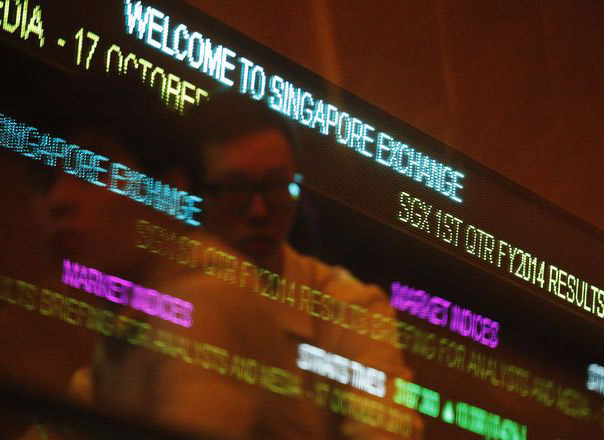SHARE prices ended up Wednesday amid optimism the coronavirus disease 2019’s (COVID-19) impact on the market has bottomed.
The Philippine Stock Exchange index was up 87.29 points to 5,408.52, a 1.64 percent hike.
The broader all shares index was up 41.04 points to 3,278.81, a 1.27 percent hike.
Gainers edged losers 99 to 87 with 41 stocks unchanged. Trading turnover reached P5.58 billion.
The peso closed at 50.88 to the dollar, down from 50.68 on Tuesday.
The currency opened at 50.70, hit a high of 50.67 and a low of 50.93. Trading turnover reached $346 million.
“Philippine shares started the second quarter on an optimistic note as investors are hoping the market has bottomed, with many strategists expecting a ‘V’ shaped recovery, a sharp drop in GDP in second quarter 2020 and a swift snapback in the third quarter 2020,” said Luis Limlingan, managing director at Regina Capital Development Corp.
Justino Calaycay Jr., head of research at Philstocks Financial Inc., said the COVID-19 story continues to “trump all other narratives” that influence investor sentiment – and will likely remain so going forward.
“Even as the case count in Wuhan has stopped — save for the new ‘imported’ ones, they say in Beijing — the global tally keeps rising: 856,000 with deaths hitting the 42,000-mark or a fatality rate of 4.9 percent. Yesterday, Philippine cases surged by 583, bringing the total past the 2,000-line. The US has surpassed China in terms of case count followed by Italy, Spain, China and Germany. The World Health Organization is reported to have asserted, the epidemic in the Asia-Pacific region is ‘far from over,’” Calaycay said.
“Hands down, first quarter numbers will be lower — it’s only a question of how low (or slow) the economies — and by extension corporate earnings — have gone. Worse, there could be some that may have even contracted! These numbers are still to be officially reported but fair expectations are negative in relation to the forecasts at the beginning of the year,” Calaycay said.
“While stock markets are supposed to be leading economic indicators, the uncertainty of when the COVID-19 will end, how it will conclude, how much damage it does keeps a dark cloud on the outlook, prospects and estimations of a recovery. That just cannot be discounted into share prices at the moment,” he added.
Most actively traded Ayala Land Inc. was up P0.95 to P31.15. Ayala Corp. was down P4.40 to P463. BDO Unibank Inc. was up P1.70 to P105.20. SM Investments Corp. was up P8 to P826. SM Prime Holdings Inc. was down P0.10 to P28.30. PLDT Inc. was up P30 to P1,159. Universal Robina Corp. was steady at P104. Jollibee Foods Corp. was down P3.20 to P103.20. Bank of the Philippien Islands was up P0.25 to P62.05.
Other markets
Asian stocks clung to gains on Wednesday, helped by a bounce in Australian shares, but risks for equities remain large as the coronavirus pandemic rattles the underpinnings of the global economy.
E-Mini futures for the S&P 500 traded 1.39 percent lower in Asian trade, highlighting the cautious mood.
MSCI’s broadest index of Asia-Pacific shares outside Japan rose 0.23 percent. Australian shares jumped by 2.87 percent, reversing a 2 percent decline on Tuesday, as a slowdown in new coronavirus cases and rising iron ore prices lifted the market.
Shares in China, where the coronavirus first emerged late last year, rose 0.18 percent, supported by hopes the world’s second-largest economy has started to recover.
China’s factory activity improved in March after plunging a month earlier, a private survey showed on Wednesday, just scraping into positive territory and beating analysts’ expectations.
Shares in South Korea, also hit hard by the virus, rose 0.19 percent, but Japanese shares fell 1.05 percent as a rapid increase in coronavirus infections in Tokyo fuelled speculation the government will place the capital on lockdown.
Wall Street tumbled on Tuesday, with the Dow registering its biggest quarterly fall since 1987 and the S&P 500 its steepest quarterly drop since a decade ago on growing evidence of the massive downturn the pandemic will incur.
US economic activity is likely to be “very bad” and the unemployment rate could rise above 10 percent because of efforts to slow the spread of the coronavirus, Cleveland Federal Reserve Bank President Loretta Mester told CNBC.
“Investors still want to buy equities, but the coronavirus is making everyone more cautious,” said Kiyoshi Ishigane, chief fund manager at Mitsubishi UFJ Kokusai Asset Management Co in Tokyo.
“There are still a lot of risks out there, but if you can identify individual shares with good dividend yields and strong financials, then you can buy at a pretty good price.”
MSCI’s gauge of stocks across the globe was little changed. The index fell nearly 22 percent for the quarter.
The number of coronavirus infections globally headed toward 800,000. Deutsche Bank analysts noted, however, that for two consecutive days the global growth in new cases was below 10 percent, having exceeded that rate for most of the past two weeks.
Health officials were much more cautious. A World Health Organization official warned that even in the Asia-Pacific region, the epidemic was “far from over.”
The dollar bounced in Asia, rising 0.28 percent to 107.86 yen and gaining 0.36 percent to $1.2375 per British pound as investors adjusted positions before the release of US manufacturing data.
The dollar fell broadly on Tuesday after the US Federal Reserve said it will allow foreign central banks to exchange their holdings of US Treasury securities for overnight dollar loans to ease a dollar funding crunch.
The yield on the benchmark 10-year US Treasury note eased slightly to 0.6554 percent.
US crude held steady at $20.49 a barrel, but Brent crude fell 2.09 percent to $25.80 per barrel as the United States, Russia, and Saudi Arabia jostle over a massive oversupply of oil.
Crude oil benchmarks ended a volatile quarter with their biggest losses in history, with both US and Brent futures hammered throughout March due to the pandemic and the eruption of a Saudi-Russia price war.
Global fuel demand has been cut sharply by travel restrictions due to the coronavirus. Forecasters at major merchants and banks see demand slumping by 20 percent to 30 percent in April, and for weak consumption to linger for months. (with Reuters)




